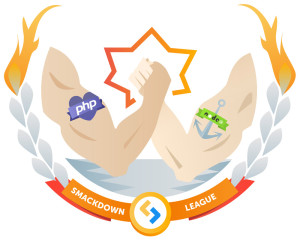Sending emails programmatically is a common task that programmers must deal with often. Although you can use PHP’s native functions, they can be too low-level, especially when you want to attach one or more files to your message. If you don’t want to use the native functions, or if you want to send mail using an object-oriented approach, then this is the article for you. I’ll introduce you to Swift Mailer, a powerful component-based library that let’s you send emails easily. Started in 2005, Swift Mailer is a library that provides several classes that allow you to send emails from within your PHP scripts or web applications. Swift Mailer has some requirements, however they’re minimal; the library needs PHP 5.2 or higher with the SPL extension and a minimum memory limit of 8MB. Citing the official documentation, installing Swift Mailer is trivial. Usually it’s just a case of uploading the extracted source files to your web server. The simplest way to install the library is through PEAR or uploading the files using an FTP. Installing from the PEAR channel is just a matter of type two commands:
pear channel-discover pear.swiftmailer.org pear install swift/swiftThe second method is probably the easiest one if you’re on a shared hosting and you don’t have access to the command shell. Just download the library from the official website and upload the
lib folder.
The Swift Mailer Family of Classes
Swift Mailer is made of more than 150 classes and interfaces grouped together in several components. Each of them have a specific purpose.- Mailer: The mailer, which is realized by the
Swift_Mailerclass, is the central class in the library and the one that actually sends the email through the methodsend(). Its constructor accepts an instance of a class that implements the interfaceSwift_Transportwhich allows you to send email using a custom SMTP. - Transporters: They implement the interface
Swift_Transportand their scope is to communicate with a service to deliver an email message. The main classes areSwift_SmtpTransportwhich uses the SMTP protocol,Swift_SendmailTransportwhich communicates with a local sendmail executable, andSwift_MailTransportthat relies on the PHP nativemail()function. - MIME Entities: This is a key component in the library. The class you’ll use to specify the receiver, the subject, the body and so on, called
Swift_Messageis made of several entities that are grouped together. Two example of entities are the attachments and the email header. - Encoders: This component isn’t something you’ll deal with because it acts behind the scenes. There are two types of Encoders: Base64 and Quoted-Printable. Their goal is to transform the contents into a format that conforms to RFC specifications.
- Plugins: These are used to extend Swift Mailer’s basic functionality. Some of the plugins are AntiFlood, which allows you to limit the number of messages sent during a single SMTP connection, Logger, used to log what’s going on during the send process, and Decorator, an amazing plugin that allows you to use an email template and change just a few differences in the email text.
A Basic Example
With me so far? Good. Now that you’ve got an idea of how the components are organized in the library, let’s get our hands dirty and see how to take advantage of the power and flexibility of Swift Mailer. In this first and very simple example, I’ll show you the creation of an email that has two recipients, a subject, and a plain-text body. Once created, it’ll be sent to the recipients. The following code uses three of the classes mentioned in the previous section:Swift_MailTransport, Swift_Mailer and Swift_Message. In addition, note the first line of the code, the require_once which pulls in Swift Mailer’s autoloader which is needed to use the library.
<?php
require_once 'lib/swift_required.php';
// Create the mail transport configuration
$transport = Swift_MailTransport::newInstance();
// Create the message
$message = Swift_Message::newInstance();
$message->setTo(array(
"hello@gmail.com" => "Aurelio De Rosa",
"test@fake.com" => "Audero"
));
$message->setSubject("This email is sent using Swift Mailer");
$message->setBody("You're our best client ever.");
$message->setFrom("account@bank.com", "Your bank");
// Send the email
$mailer = Swift_Mailer::newInstance($transport);
$mailer->send($message);Swift_MailTransport is used to create an instance of a transport layer which will use the native PHP mail() function. Then I created a Swift_Message instance which you can think of as the email object. In the following lines I set the recipients using the setTo() method, the email subject using setSubject(), the email body using setBody(), and the sender using the setFrom() method. With the layer defined and the email created, it’s time to actually send the email, which is done using the send() method of the Swift_Mailer class.
An Example with Attachments
There is no doubt that attachments are a staple of today’s email systems. No one can live without them. This slightly more complicated example will show you how to send an email that not only has an attachment but also other features.- Two additional receivers, one in CC and the second in BCC using
setCc()andsetBcc(). - One attachment retrieved from disk using the
attach()method. - A custom SMTP configuration using the
Swift_SmtpTransportclass. - Know what recipients have not received the email using the second parameter of the
send()method.
<?php
require_once 'lib/swift_required.php';
// Create the SMTP configuration
$transport = Swift_SmtpTransport::newInstance("smtp.fake.com", 25);
$transport->setUsername("Username");
$transport->setPassword("Password");
// Create the message
$message = Swift_Message::newInstance();
$message->setTo(array(
"hello@gmail.com" => "Aurelio De Rosa",
"test@fake.com" => "Audero"
));
$message->setCc(array("another@fake.com" => "Aurelio De Rosa"));
$message->setBcc(array("boss@bank.com" => "Bank Boss"));
$message->setSubject("This email is sent using Swift Mailer");
$message->setBody("You're our best client ever.");
$message->setFrom("account@bank.com", "Your bank");
$message->attach(Swift_Attachment::fromPath("path/to/file/file.zip"));
// Send the email
$mailer = Swift_Mailer::newInstance($transport);
$mailer->send($message, $failedRecipients);
// Show failed recipients
print_r($failedRecipients);Swift_SmtpTransport class. It accepts two parameters: the SMTP server and the connection port. You use the instance to set an appropriate username and password to access the server using the setUsername() and setPassword() methods. Then, just like the first example, I created an Swift_Message object and set the recipients, the subject, and so on. However, this time I also took advantage of the setCc() and the setBcc() methods that, as you might guess, allow you to set carbon copy and blind carbon copy recipients.
The key method of this example is attach() which attaches a file taken from the hard disk using the static method fromPath() that takes the path to the file you want to attach as its parameter. Note that this time I also print the number of failed recipients retrieved using the send() method’s second parameter.
Using a Template
The third and final example shows you how to use the Decorator plugin, ideal for things like sending newsletters to your subscribers. It allows you to send the same email to several recipients having small differences such as the recipient name inside the email body. The plugin will look inside the template (the body) and will replace the placeholders with the set values. To use the plugin, you first need to register it using theregisterPlugin() method and then build and use an array of replacement values. In the following code I’ll put two placeholders, username and transactions, which will be programmatically replaced by values referring to the user’s email.
<?php
require_once 'lib/swift_required.php';
// Usually you want to replace the following static array
// with a dynamic one built retrieving users from the database
$users = array(
array(
"fullname" => "Aurelio De Rosa",
"operations" => 100,
"email" => "hello@gmail.com"
),
array(
"fullname" => "Audero",
"operations" => 50,
"email" => "test@fake.com"
)
);
// Create the replacements array
$replacements = array();
foreach ($users as $user) {
$replacements[$user["email"]] = array (
"{fullname}" => $user["fullname"],
"{transactions}" => $user["operations"]
);
}
// Create the mail transport configuration
$transport = Swift_MailTransport::newInstance();
// Create an instance of the plugin and register it
$plugin = new Swift_Plugins_DecoratorPlugin($replacements);
$mailer = Swift_Mailer::newInstance($transport);
$mailer->registerPlugin($plugin);
// Create the message
$message = Swift_Message::newInstance();
$message->setSubject("This email is sent using Swift Mailer");
$message->setBody("You {fullname}, are our best client ever thanks " .
" to the {transactions} transactions you made with us.");
$message->setFrom("account@bank.com", "Your bank");
// Send the email
foreach($users as $user) {
$message->setTo($user["email"], $user["fullname"]);
$mailer->send($message);
}$replacements array. In the example above, as placeholders I used a string inside two brackets (i.e. {fullname}) but you can use whatever you want. This time, I haven’t set all the recipients in the same statement as before and I used a for loop. This is done because the plugin intercepts the sending process, reads the recipient email, and replaces the placeholders using the values of the replacement array.
Conclusion
In this article I showed how you can easily send emails using Swift Mailer. This is a very powerful library that, as you’ve seen, allows you to do a lot of things using an OOP approach. Of course Swift Mailer has a lot of other methods and classes I’ve not covered in this article. You can study up on them in the official documentation, but this should be enough to get you started sending emails without hassle. Image via FotoliaFrequently Asked Questions about Swift Mailer
How can I install Swift Mailer using Composer?
Swift Mailer can be easily installed using Composer, a tool for dependency management in PHP. To install Swift Mailer, you need to have Composer installed on your system. Once you have Composer installed, you can install Swift Mailer by running the following command in your project directory: composer require "swiftmailer/swiftmailer:^6.0". This command tells Composer to download the Swift Mailer package and its dependencies into your project.
How can I send an email with Swift Mailer?
Sending an email with Swift Mailer involves creating a message, configuring the mailer, and sending the message. Here is a basic example of how to send an email with Swift Mailer:require_once '/path/to/vendor/autoload.php';$message = (new Swift_Message())
->setSubject('Hello')
->setFrom(['john@doe.com' => 'John Doe'])
->setTo(['receiver@domain.org', 'other@domain.org' => 'A name'])
->setBody('Here is the message itself');$transport = (new Swift_SmtpTransport('smtp.example.org', 25))
->setUsername('your username')
->setPassword('your password');$mailer = new Swift_Mailer($transport);$result = $mailer->send($message);
How can I add attachments to an email with Swift Mailer?
Swift Mailer allows you to add attachments to your emails. You can attach files from a path, a string, or an existing Swift Attachment instance. Here is an example of how to attach a file from a path:$message = (new Swift_Message())
->setSubject('Hello')
->setFrom(['john@doe.com' => 'John Doe'])
->setTo(['receiver@domain.org'])
->setBody('Here is the message itself')
->attach(Swift_Attachment::fromPath('path/to/image.jpg'));
How can I send HTML emails with Swift Mailer?
Swift Mailer allows you to send HTML emails by setting the body of the message to an HTML string and setting the content type to ‘text/html’. Here is an example:$message = (new Swift_Message())
->setSubject('Hello')
->setFrom(['john@doe.com' => 'John Doe'])
->setTo(['receiver@domain.org'])
->setBody('<p>Here is the <strong>HTML</strong> message itself</p>', 'text/html');
How can I handle errors in Swift Mailer?
Swift Mailer throws exceptions when an error occurs. You can catch these exceptions to handle errors. Here is an example:try {
$result = $mailer->send($message);} catch (Swift_TransportException $e) {
echo 'There was an error while sending the email: ' . $e->getMessage();}
How can I use Swift Mailer with Gmail?
You can use Swift Mailer with Gmail by configuring the SMTP transport with the Gmail SMTP server settings. Here is an example:$transport = (new Swift_SmtpTransport('smtp.gmail.com', 465, 'ssl'))
->setUsername('your Gmail username')
->setPassword('your Gmail password');
How can I send multiple emails with Swift Mailer?
You can send multiple emails with Swift Mailer by creating multiple message instances and sending them with the same mailer instance. Here is an example:$message1 = (new Swift_Message())
->setSubject('Hello')
->setFrom(['john@doe.com' => 'John Doe'])
->setTo(['receiver1@domain.org'])
->setBody('Here is the message itself');$message2 = (new Swift_Message())
->setSubject('Hello')
->setFrom(['john@doe.com' => 'John Doe'])
->setTo(['receiver2@domain.org'])
->setBody('Here is the message itself');$result1 = $mailer->send($message1);$result2 = $mailer->send($message2);
How can I use Swift Mailer with Symfony?
Swift Mailer is integrated with Symfony and can be used as a service. You can send emails with Swift Mailer in Symfony by getting the mailer service and using it to send a message. Here is an example:$message = (new Swift_Message())
->setSubject('Hello')
->setFrom(['john@doe.com' => 'John Doe'])
->setTo(['receiver@domain.org'])
->setBody('Here is the message itself');$this->get('mailer')->send($message);
How can I set the priority of an email with Swift Mailer?
You can set the priority of an email with Swift Mailer by calling the setPriority method on the message instance. The priority is an integer between 1 (highest) and 5 (lowest). Here is an example:$message = (new Swift_Message())
->setSubject('Hello')
->setFrom(['john@doe.com' => 'John Doe'])
->setTo(['receiver@domain.org'])
->setBody('Here is the message itself')
->setPriority(1);
How can I send emails asynchronously with Swift Mailer?
Swift Mailer does not support asynchronous email sending out of the box. However, you can achieve this by using a message queue. You can enqueue messages and then send them in a separate process. This allows your application to continue processing other tasks without waiting for the emails to be sent.
I'm a (full-stack) web and app developer with more than 5 years' experience programming for the web using HTML, CSS, Sass, JavaScript, and PHP. I'm an expert of JavaScript and HTML5 APIs but my interests include web security, accessibility, performance, and SEO. I'm also a regular writer for several networks, speaker, and author of the books jQuery in Action, third edition and Instant jQuery Selectors.




